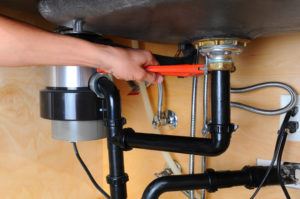Plumbing repairs can be daunting without the proper tools. Using the wrong wrench can lead to inefficient fixes or even worsen plumbing issues. This can cause unnecessary damage and increased costs.
A pipe wrench is important for gripping and turning pipes in various plumbing tasks. There are several types of pipe wrenches, such as straight, offset, compound leverage, and adjustable wrenches. Each type serves a unique purpose, from working in tight spaces to handling heavy-duty jobs.
Choosing the right pipe wrench involves assessing the size and type of pipes you’ll be working with. This ensures that your wrench can handle the job without damaging the plumbing.
This guide will explore pipe wrenches and how to select the appropriate one for different plumbing scenarios. By understanding these tools better, you can ensure that your plumbing repairs are done efficiently and correctly.

What is a Pipe Wrench?
A pipe wrench is a tool designed primarily for gripping and turning pipes or round fittings. It has a heavy metal handle and an adjustable jaw, which allows it to firmly clamp around objects with rounded surfaces.
The pipe wrench’s design is quite clever. Its teeth angle back towards the handle, which means the more force you apply to the handle, the tighter the grip.
Unlike other wrenches, the pipe wrench isn’t used for bolt tightening or loosening. Instead, it’s the go-to tool for plumbers and those working with metal or plastic pipes. The adjustable jaw makes it versatile for various sizes. This ensures a secure fit and enough leverage for turning pipes in the installation and removal processes.
Different Types of Pipe Wrenches and Their Uses
Choosing the right pipe wrench is important for tackling plumbing jobs effectively. There are several types of pipe wrenches, each with its own specific design to suit different tasks and pipes.
Below is an overview of the most common types of pipe wrenches and their primary uses:
Straight Pipe Wrench
The straight pipe wrench is the standard tool for most plumbing jobs. It is ideal for gripping and turning pipes that are easily accessible and not obstructed by other fixtures. This wrench is typically used on pipes that are in clear, open areas.
Offset Pipe Wrench
Designed for tight spaces, the offset pipe wrench features a jaw set at an angle to the handle. This design allows it to maneuver in spots where a straight wrench cannot fit. This makes it perfect for jobs that need working around obstructions or at odd angles.
End Pipe Wrench
The end pipe wrench has a jaw configured to provide a strong grip at the very end of the pipe, close to the wall or other flush surfaces. It is especially useful for pipes that terminate close to a surface where a regular wrench cannot get a full grip.
Chain Pipe Wrench
The chain pipe wrench is the tool of choice for irregularly shaped or extremely large pipes. It uses a heavy-duty chain that wraps around the pipe and provides a versatile and secure grip for unusual shapes and sizes.
Strap Pipe Wrench
The strap pipe wrench uses a rubber or fabric strap. This provides a non-marring grip on polished, painted, or plastic surfaces where scratches and damage must be avoided.
Compound Leverage Wrench
When facing pipes that are tight or stuck, the compound leverage wrench offers increased force with less effort. This wrench uses a mechanism to amplify your force, making it easier to turn stubborn pipes without excessive strain.
Choosing the Right Pipe Wrench
Choosing the right pipe wrench for your plumbing needs involves considering several factors to ensure you have the right tool for the job. Here’s what to look out for:
Size and Length
- Size of the Jaw: The wrench you choose must have a jaw that can open wide enough to fit around the pipe you intend to work on. Pipe wrenches are available in various sizes, typically ranging from 6 inches to 48 inches. The size indicates the maximum jaw capacity.
- Handle Length: Longer handles provide more leverage, which is beneficial for stubborn pipes but may be complicated in tight spaces. Conversely, shorter handles offer less leverage but greater control and ease of use in confined areas.
Type of Pipe Wrench
- Different tasks might require different types of pipe wrenches. Each type is suited for specific scenarios, such as tight spaces or delicate pipes that must not be scratched.
Material
- Most pipe wrenches are made from steel or aluminum. Steel wrenches are heavier but extremely durable and are thus suitable for heavy-duty work. Aluminum wrenches are lighter, but they might not withstand the same level of abuse as steel.
Jaw Design
- The teeth of the wrench should be sharp and durable. Some wrenches come with replaceable teeth, which can be a practical feature if the wrench is used frequently. Also, consider the grip pattern of the jaws—some are designed for a stronger grip on smoother surfaces.
Handle Comfort
- The wrench should have a comfortable handle, especially if you use it extensively. Some handles are ergonomically designed or padded to reduce hand strain and improve grip.
Adjustability
- Check how easily and quickly the jaw can be adjusted. A smooth adjustment mechanism allows for faster and more efficient work, particularly when switching frequently between different pipe sizes.
Brand and Quality
- Opt for reputable brands known for quality. A well-made pipe wrench will not only last longer but also perform better.
Price
- While budget is always a consideration, it’s important to invest in a tool that will perform reliably. Sometimes, spending more upfront can save money in the long run by avoiding replacements and repairs.
By carefully evaluating these factors, you can select a pipe wrench that best suits your project needs, provides good value, and ensures safety and efficiency in your plumbing tasks.

